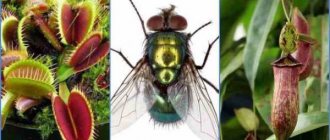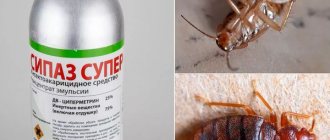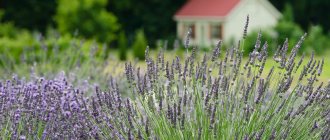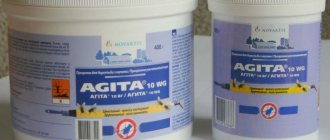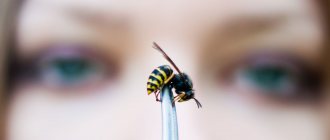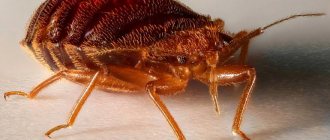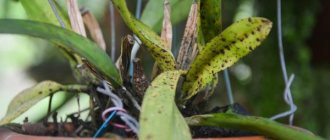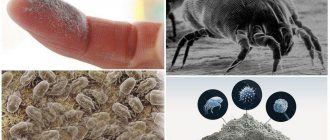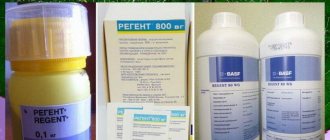All predator flowers can be divided into three large groups, differing from each other in the way they catch prey.
1. Trap plants
This is the Venus flytrap (Dionaea muscipula), the leaves of which look like a mini-trap that closes when an insect gets inside.
2. Plants with sticky leaves
The most striking representative of this group is the sundew (Drosera). On its leaves there are small hairs with droplets of sticky liquid that help attract and digest insects.
3. Plants with leaves shaped like a pitcher
These are Nepenthes and Sarracenia (Darlingtonia). Once the insect gets into the jug, it slides down the smooth walls and drowns in the caustic liquid at the bottom.
Why did plants switch to animal food?
A plant that eats insects has evolutionarily changed its diet not because of a good life. All species of these carnivores grow on soils lacking nitrogen and other useful substances. It is very difficult for them to survive on sandy soils or peat, so some species have adapted to life thanks to the ability to digest animal protein. It is animal food that can completely renew reserves of nitrogen and minerals.
Plants use various traps to catch prey. In addition, all plant predators are distinguished by their bright colors and attractive smell, which insects associate with nectar-bearing flowers. But do not forget that animal food is only “vitamins” for plants, and the main nutrition for them is photosynthesis.
Insidious beauty
The food for predatory flowers is mainly insects. They rarely sit down for anything, except to rest a little. Beetle bugs are also constantly looking for something to profit from, such is the fate of all living creatures on the planet. Of course, carnivorous plants could simply wait for a lucky break, but then it is unlikely that most of them would survive. Therefore, they take the initiative on the same principle as people who claim that luck is in their hands. In the absence of limbs, the predator plant uses the organs at its disposal, namely leaves and flowers. You can attract capricious insects with the aroma, color and beauty that captivates bees and butterflies with harmless daisies, poppies or daffodils, the only difference being that they should be even more seductive, at least from the point of view of insects.
Varieties of carnivorous plants
To date, scientists have described about 500 species of carnivorous plants that belong to 19 families. We can conclude that the evolutionary development of these groups of organisms occurred in parallel and independently.
The most famous plants that eat insects:
- sarracenia;
- genliseya;
- Darlingtonia;
- pemphigus;
- butterwort;
- sundew;
- biblis;
- Aldrovanda vesica;
- Venus flytrap.
Interesting fact: flycatchers have the Latin name muscipula, which translated into Russian does not mean “flytrap”, but “mousetrap”.
Who can Nepenthes eat?
If in terms of beauty sarracenia may take first place among insectivorous flowers, then in terms of size priority rightfully belongs to Nepenthes, an inhabitant of the South Pacific region. He lives in Malaysia, Australia, Indonesia, China, India, as well as the Philippines, Seychelles, Madagascar, Sumatra and Borneo. The primates there use this plant as a source of water in the heat, so its other name is “monkey cup”. Nepenthes leaves resemble a water lily, they are connected to long stems, like vines. The bait is plentiful and may be more or less sticky. The unfortunate insects fall into this liquid, drown in it, and then dissolve. Most of the Nepenthes species are of very moderate size, but there are also real giants among them. These are not only insectivorous plants. Photos of Nepenthes Rajah or Nepenthes Rafflesiana, eagerly eating birds, mice and even rats, make an indelible impression. Fortunately, they pose no danger to larger mammals and humans.
Prevalence of entomophagous plants
Carnivorous plants are not only exotic representatives of the biosphere. They are found everywhere - from the equator to the Arctic. Most often you can stumble upon them in damp places, especially in swamps. Most species have been recorded in the southwestern part of Australia. Some species are eurybionts and grow in many biocenoses. The range of other species is more limited - for example, the Venus flytrap is found in nature exclusively in South and North Carolina.
What species grow in Russia
In Russia there are 13 species of carnivorous plants from 4 genera. The genus Sundew is represented by two species: common sundew and English sundew. They grow mainly in sphagnum bogs. Aldrovanda bladderwort is found both in the European part of the Russian Federation and in the Far East and the Caucasus.
The Pemphigus genus in Russia is represented by four species, the most common of which is Pemphigus vulgaris. These are aquatic plants that differ in their growth rate. They are found in shallow waters throughout Russia (with the exception of the Far North). Also in our area you can find representatives of the Zhiryanka genus, which grow in swamps, stream banks, and some on trees and mosses.
Sarracenia - the evil queen
She comes from the New World. Lives mainly in the southern part of North America, although it is also found in Canada, but less frequently. This predatory plant uses special leaves for hunting, also called trap leaves, similar to a funnel with a hooded cape. This cover protects the hole, from which an odor tempting to insects is emitted, from rain and excessive diffusion of a secretion liquid with an aroma reminiscent of nectar. Sarracenia bait also contains a substance that has a relaxing effect on victims, similar to a narcotic effect. The surface of the leaf is smooth and slippery. Under the spell of the sweet smell, bugs or flies themselves strive to fall into this terrible funnel, from which there is no way out. Once dropped inside, the victims are digested and dissolved by protease and other caustic enzymes.
Types of Trap Organs
Predators catch their victims using trap organs, which, depending on the species, are of several types:
- pitcher leaves. This design has a lid and the inside is filled with water (Nepenthes, Darlingtonia);
- leaves-traps. The modified leaf consists of two valves with teeth on the edges. When the insect is inside, the valves close (Venus flytrap);
- Velcro leaves. On the leaf plates there are special hairs that secrete a sticky secretion that attracts insects (sundew, butterwort);
- suction traps. Water along with the victim is sucked under pressure into a special bubble (pemphigus);
- crab claw traps. Victims easily fall into them, but cannot get out because of the hairs growing forward in a spiral (genlisea).
Water
This is a subgroup of predator plants that grow in warm bodies of water. They feed on flying insects and small crustaceans. Aquatic carnivorous plants can be found, in addition to their natural habitat, only in botanical gardens, since they are very demanding on living conditions and are not suitable for growing at home.
Pemphigus
It grows in fresh water or marshy soil on all continents except Antarctica. The only carnivore that uses a bubble as a trap. It feeds on water fleas, tadpoles, insects, and protozoa. Bubble traps are under negative pressure. When prey touches the bubble, the hole opens and sucks the victim along with water in hundredths of seconds. The size of the bubbles is very small - from 0.2 mm to 1.2 cm.
Aldrovanda vesiculata
It lives only in fresh water bodies in western Europe, Africa, Asia and Australia. The plant has no roots, so it moves freely throughout the pond. It grows very quickly, but the length of the stems does not exceed 11 cm. Short 3-mm leaves-threads act as a trap. The ends of the threads are covered with sensitive bristles, which react sensitively to moving objects - crustaceans and aquatic larvae. When the prey touches them, the leaves fold and capture the prey.
Darlingtonia californica
This is a very rare carnivorous plant found in the cold swamps of Oregon and California. A truly amazing plant: it not only lures prey into its jug traps, attracting it with a sweet aroma, but also prevents it from escaping due to its ingenious internal structure with many false exits. The drugged victim wastes precious time in unsuccessful attempts to get free.
Keeping at home
The following types of carnivorous plants can be kept at home:
- Venus flytrap;
- all types of sundews;
- tropical fatworts;
- sarracenia;
- dwarf nepenthes.
In Russia, the most popular indoor predator is the Venus flytrap. The flower pot should be kept on a well-lit windowsill or on a table with artificial lighting. The indoor air temperature in summer should be between 18–25 °C, and in winter – 10–13 °C. Since the flytrap is a moisture-loving plant, the soil in the pot must be constantly moistened. The plant should be watered with clean rain or melt water.
Reproduction
Flycatchers reproduce by cuttings, dividing the bush and through cross-pollination. The flowering period of Dionaea begins in late spring. In natural biocenoses, the plant is pollinated by insects. At home, flowers need to be pollinated by hand, transferring pollen from the stamens to the stigma with a soft brush.
Top dressing
If a plant is called carnivorous, this does not mean at all that it needs to be fed meat. The flycatcher itself must hunt small insects in order to fully digest food and obtain the necessary substances. Also, do not forget that Dionaea receives its main nutrition from the ground.
Care during the rest period
During the cold season, the Venus flytrap stops its growth and falls into suspended animation. At some point it may even seem to you that the plant is dying. But this is not so, dionaea needs this condition to gain strength for the next growing season. At this time, your task will be to remove withered leaves and wait for new ones to grow.
Sticky fat woman
Almost a complete analogue of duct tape, which just a couple of decades ago hung from the ceiling of almost every diner in the summer. True, Pinguicula, or butterwort, is much more beautiful than those dark brown spirals of the past. The bright green or pink leaves are covered on the outside with two types of cells. The pedicel glands, located closer to the stem, produce mucus containing glue that attracts with its smell, and at the same time reliably fixes insects. This is the same Velcro. The second type of cells are the so-called sessile glands. They belong directly to the digestive system and produce protease, esterase and amylase, that is, enzymes that decompose living organisms into components useful for the plant.
Some species of butterwort hide under a dense rosette for the winter, only to bloom again in the spring and continue merciless hunting, spreading carnivorous sticky leaves.
Aldrovanda - floating trap
The vesicular aldrovanda lives in water. She is a record holder in two categories. Firstly, this carnivorous creature (it’s hard to call it a flower, more like some kind of algae) grows very quickly, almost a centimeter every day. This does not mean that aldrovanda will soon fill all tropical reservoirs. As quickly as it lengthens, it shortens just as quickly. This plant has no roots; it grows at one end and dies at the other.
Biologists consider its traps to be the second unique feature of Aldrovanda. They are very small, up to three millimeters, but they are enough to catch small aquatic vertebrates, and do it quickly. The trap consists of two halves covered with hairs. The response time is measured in tens of milliseconds, which is a kind of speed record. Such rapid movement of a living organism has no analogues.
Genlisey
Unlike other carnivorous plants on this list, Genlisea's diet likely consists of protozoa and other microscopic organisms, which it attracts and eats using specialized leaves that grow underground. These underground leaves are long, light-colored, and root-like in appearance, but the plant also has regular green leaves that are above ground and participate in the process of photosynthesis. Genlisea is distributed in regions of Africa, Central and South America.
Prevention of flies
These frightening factors are a good reason to fight against unpleasant insects.
But you should understand: in order not to start a war with flies, lovers of dirt, certain preventive measures are necessary:
- maintaining cleanliness in the house at the proper level: frequent wet cleaning, timely disposal of garbage;
- lack of any food on the table;
- regular cleaning of the livestock pen (if any), watering the manure with karphos solution;
- mosquito nets on windows;
- pots of geraniums on the windowsills of the house;
- plants with a pungent odor planted on the site: tansy, lavender, wormwood, elderberry and bird cherry bushes.
Compliance with this series of rules will not only help you get rid of annoying insects, but will not force you to face such a problem as flies indoors.
Sources
- https://nzs-rst.ru/muhi/trava-otpugivayushchaya-muh.html
- https://notklop.ru/muhi/2-fakty/25-kakoj-zapah-otpugivaet-muh/
- https://kursi-floristiki.ru/sredstva/kakie-rasteniya-otpugivayut-muh.html
- https://KatalogPoleznogo.ru/dom/30-sposobov-vyivesti-muh-iz-kvartiryi-doma-dachi.html
- https://WikiParazit.ru/babochki-i-moshki/rasteniya-i-narodnye-sredstva-kotorye-otpugivayut-muh.html
- https://stroy-podskazka.ru/muha/zapahi-ne-lyubyat/
- https://antinasekom.ru/kak-borotsya-s-muhami.html
- https://nasekomye-vrediteli.ru/ot-muh-trava.html
- https://hloptarakan.ru/muhi/chto-otpugivaet-muh.html
Sundew
Sundew
Sundew is a carnivorous plant common in marshy areas. This is a low plant of red-green color.
Its leaves lie spread out on the ground. The entire surface of the leaf is covered with cilia: small in the middle, large on the edge.
Each hair ends in a ball containing glands that produce a drop of mucus that resembles a tear.
Its shine lures insects, they land on the leaf and stick to the cilia.
They immediately begin to curl towards the center of the leaf - after two hours they will close around the victim and begin to produce enzymes that break down protein.
When digestion is complete, the leaf straightens, and the sundew is again ready to catch food.
It is interesting that the cilia react only to protein foods.
If you put sugar or a grain of sand on a leaf, the cilia and the leaf will remain motionless.
Possible problems during cultivation
If you follow the above rules, you can ensure healthy growth for the Dionea flycatcher, and for yourself the joy of observing and caring for the exotic. Dionaea muscipula can live 15–20 years in indoor conditions.
Healthy plant
In unsuitable conditions, the plant's eyelids will be short. Possible problems and causes:
- yellowing of leaves due to the accumulation of calcium in the soil when watering with hard water;
- leaf falling when the soil dries out;
- brown spots on leaves due to sunburn;
- brown leaves in too dark and cold place.
The death of old leaves of Dionaea occurs constantly. Young leaves grow from the center of the rosette. Traps that have exhausted their reserve of pops die off. Blackened leaves are not pulled out, but cut off, leaving a petiole of 0.5 cm.
Methods of propagation of the Venus flytrap
Dionea can be propagated in three ways:
- dividing the bush (bulb);
- leaf cuttings;
- from seed.
The bush is divided in the spring after hibernation, during the replanting of the flycatcher. The bush is removed, shaken off the soil and divided into bulbs. The separated onion should have roots. It is placed with the roots down in the prepared substrate and sprinkled, leaving only the sprout on top. The top of the former shoot is removed and sprinkled with coal. The soil should be moist; for the first time, you can cover the container with transparent material and place it in a brightly lit place, this will allow the seedling to take root faster. After the first leaves appear, care is carried out as for an adult plant.
Venus flytrap cuttings are taken from a healthy plant. To do this, a leaf is pinched off at the base of the roots, its trap is removed, and the cutting itself is placed in a greenhouse. The presence of white color at the bottom of the stem indicates the correct separation of the cutting. It is recommended to maintain very high humidity and good lighting, and periodically ventilate the planting to avoid rotting. If all conditions are met, the leaf will die, giving life to a small seedling. After two to three months, it can be transplanted and cared for as usual.
Growing a Venus flytrap from seed is the most time-consuming and difficult approach.
The seeds are grown in a special greenhouse, it can be just a box covered with transparent polyethylene or glass. The purchased seeds must be no older than a year, otherwise there is a possibility that they will not germinate. First they indulge in cold stratification. One way is to place them in soil, damp gauze or a napkin, wrap them tightly in film and put them in the refrigerator for a month and a half. Before this, it is necessary to treat the seeds with a solution of a fungicide, for example, topaz in the proportions of two drops per glass of distilled water.
Seeds obtained from a flower box are best sown within 2-3 days. When healthy and ripe, they should have a black, smooth, hard surface, shaped like a droplet. The seed capsule must be completely dry, usually it contains about 30 seeds about 2 mm in size.
The optimal period for sowing will be the end of September or the beginning of October.
Seeds are poured into the moist soil prepared for the flytrap, and it is allowed to sprinkle them a little with the substrate. Next, the pot is covered and placed in a warm (25-27 °C), humid (40-60%), brightly lit place. The main conditions are lighting in the sun or under a fluorescent lamp for at least 16 hours every day, and bottom watering of the soil. Shoots are expected within a period of one to three months. As soon as the leaves appear, the seedlings will need to be ventilated periodically by opening the greenhouse lid
During the first three months, the mature plants are planted in separate containers, being careful with the roots. Further care is carried out by fulfilling the conditions described above for the Venus flytrap. A full-fledged, mature plant grown from seed should be expected no earlier than after 5 years
A full-fledged, mature plant grown from seed should be expected no earlier than after 5 years.
After growing by any of the methods, the plant will grow for about 5 months, and then it will begin to prepare for winter and lose its activity. To stop hibernation, the flycatcher can be transplanted into new soil, after which it will still grow, but wintering must be carried out.
